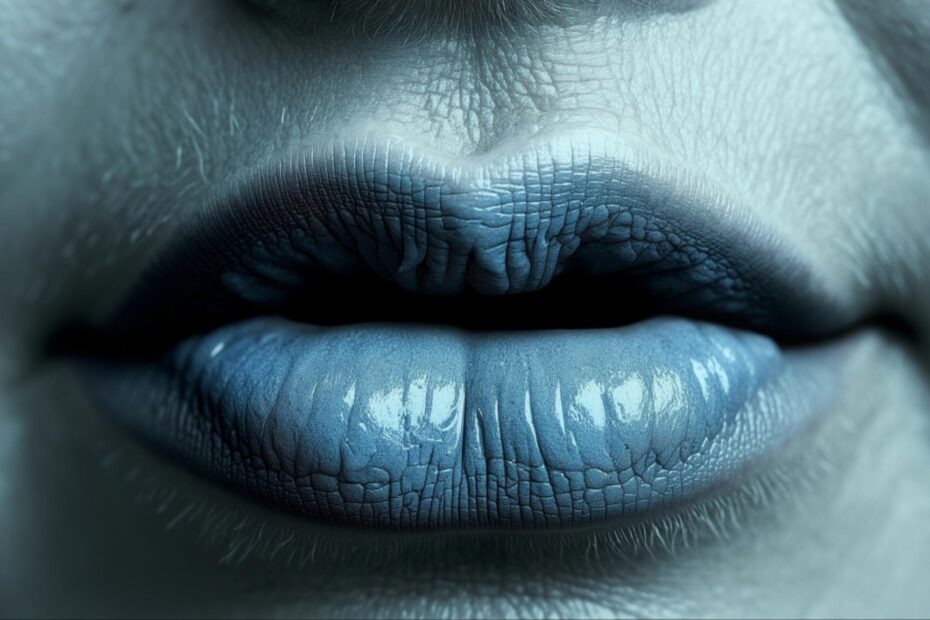Table of Contents
- Your Lips Are Talking – Are You Listening?
- The Science Behind What You See in the Mirror
- When Pale Lips Don’t Mean Anemia
- How I Started Monitoring My Own Health Through My Phone
- Getting Treatment That Actually Works for Your Body
- Knowing When to Drop Everything and See a Doctor
- Final Thoughts
TL;DR
- Your lips are packed with way more tiny blood vessels than regular skin, making them incredibly sensitive to changes in your blood’s oxygen-carrying power
- White or pale lips can signal hemoglobin levels below 7-10 g/dL, but they’re not always caused by anemia
- You can monitor your anemia status using your smartphone with the right lighting and photo techniques
- Different types of anemia create different lip color patterns – iron deficiency looks totally different from B12 deficiency
- Weather and time of day can mess with your lip color readings more than you’d think
- Treatment effectiveness shows up in lip color changes weeks before lab results prove improvement
- Completely white or blue-tinged lips with chest pain or confusion mean drop everything and get emergency help
Your Lips Are Talking – Are You Listening?
Here’s something that blew my mind when I first discovered it – your lips are basically like having a health monitor built right into your face. I’m not kidding. They can warn you about anemia weeks before you start feeling that bone-deep exhaustion that makes getting out of bed feel impossible.
I stumbled onto this completely by accident. I was taking selfies (don’t judge) and noticed my lips looked… off. Not sick exactly, just kind of washed out. Turns out, my body was sending me signals through the most obvious place possible – right there in the mirror I look at every morning.
Your lips are packed with way more tiny blood vessels than regular skin. Like, seriously packed. That’s what gives them that healthy pink color we all want. But here’s the crazy part – when your blood can’t carry oxygen properly (hello, anemia), these same blood vessels can’t maintain that vibrant color. So your lips basically become your body’s early warning system.
With iron deficiency anaemia affecting approximately 30% of people worldwide according to IVBoost UK, this isn’t some rare thing. This is your body trying to help you catch a super common problem before it knocks you flat.
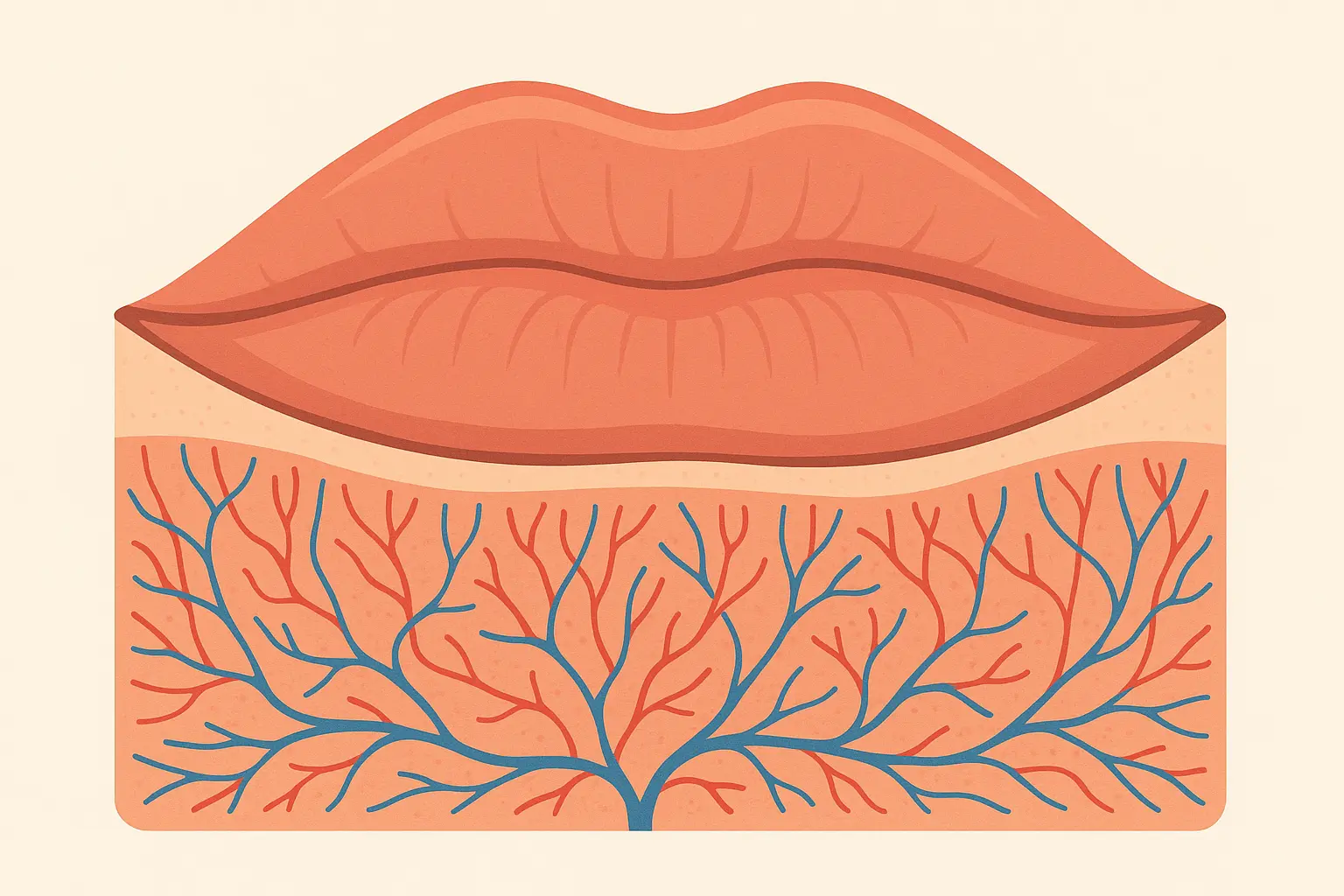
The Incredible Highway of Blood Vessels in Your Lips
Okay, so imagine cramming 600-800 tiny blood vessels into a space the size of your pinky nail. That’s what’s happening in every little bit of your lips. Compare that to regular skin, which only has about 300-400 blood vessels in the same space. No wonder your lips are so sensitive to everything!
And here’s the kicker – unlike the rest of your skin, your lips don’t have that protective layer of melanin. So you’re literally looking through a window into your blood health every time you glance in the mirror. It’s like having a diagnostic tool that you carry around everywhere, but most of us never learn how to read it.
Why Your Lips Change Color Before You Feel Anything
Remember those packed blood vessels I mentioned? Well, they’re like the canaries in the coal mine of your body. When your oxygen-carrying power starts dropping, they lose their pink color before you even notice you’re getting tired climbing stairs.
According to IVBoost UK, “In the United Kingdom, roughly 3% of men and 8% of women grapple with iron deficiency anaemia,” making lip color assessment a valuable early warning system for a huge chunk of the population.
I learned this the hard way when I kept ignoring my pale lips and ended up so exhausted I could barely function. My hemoglobin had dropped to 8.2, but my lips had been trying to warn me for weeks.
What Your Lip Color Actually Tells You
Each level of hemoglobin in your blood shows up as specific color changes in your lips. Here’s a rough guide I’ve learned to use:
| Hemoglobin Level (g/dL) | What Your Lips Look Like | What It Means | What You Should Do |
|---|---|---|---|
| 12-16 (Normal) | Healthy pink | You’re good to go | Keep doing what you’re doing |
| 10-12 (Mild) | A bit pale | Maybe time to think about iron | Check your diet, consider testing |
| 7-10 (Moderate) | Noticeably pale | This needs attention | Get this checked out soon |
| Below 7 (Severe) | White or blue-tinged | This is serious | Drop everything, get help NOW |
Reading the Patterns Your Body Creates
Your lips don’t just turn pale all at once. There are actually patterns that show up first. Like, the edges might lose color before the middle does. Or when you press your lip and let go, it takes forever for the color to come back – that’s called delayed capillary refill, and it’s a dead giveaway.
My friend Sarah noticed this exact thing. She kept taking morning selfies and saw her lips gradually going from vibrant pink to this washed-out color over a few weeks. When she pressed her lower lip and released it, the color took way longer than usual to return. That slow color return, plus feeling more tired than usual, made her get tested. Turns out her hemoglobin was 8.2 – definitely low enough to explain everything.
Why Time and Weather Matter More Than You Think
Here’s something nobody tells you – cold weather can actually hide mild anemia by making your blood vessels contract. So you might look healthier in winter than you actually are. Meanwhile, hot weather does the opposite, making your blood vessels expand and potentially making your lips look better temporarily.
I learned this when I kept getting confusing readings until I figured out I needed to check my lips under the same conditions every time. Understanding these variables prevents you from misreading your body’s signals.
The Cold Weather Trick
Ever notice how your lips look different in winter? It’s not just dry air. Cold makes those blood vessels in your lips shrink up, which can mask early anemia signs. You might think you look fine when you’re actually starting to become deficient.
Hot weather does the reverse – it opens up those blood vessels, so you might look healthier than your iron stores actually are.

Best Time to Check Your Lips
Your blood levels naturally go up and down throughout the day. They’re usually lowest in late afternoon (around 3-5 PM), which actually makes this the best time to check your lips. You’re more likely to catch subtle changes that might be hidden during your morning peak.
My Lip-Checking Routine:
- Check between 3-5 PM for the most accurate reading
- Make sure I’m at normal room temperature (68-72°F)
- Use natural light when possible
- Don’t check right after eating or drinking
- Take a photo with the same lighting and angle
- Compare to older photos taken the same way
The Dehydration Trick That Fools Everyone
Here’s something that really threw me for a loop – being dehydrated can actually make your lips look healthier than they are. When you’re dehydrated, your blood becomes more concentrated, so the red blood cells you do have are packed closer together. This can make your lips look pinker even when your iron stores are running low.
It’s like your body’s short-term fix, but it hides the real problem. I’ve seen people miss early anemia signs because they were always a bit dehydrated, which made their lip color look better than their actual iron levels.
How Your Body Compensates (And Fools You)
When you’re dehydrated, your body reduces the watery part of your blood to maintain blood pressure, which concentrates the remaining red blood cells. This concentration effect can make your lips look pinker and healthier even when your iron stores are getting low. It’s your body’s way of keeping things running short-term, but it masks the underlying problem and can delay you from getting the help you need.
The Science Behind What You See in the Mirror
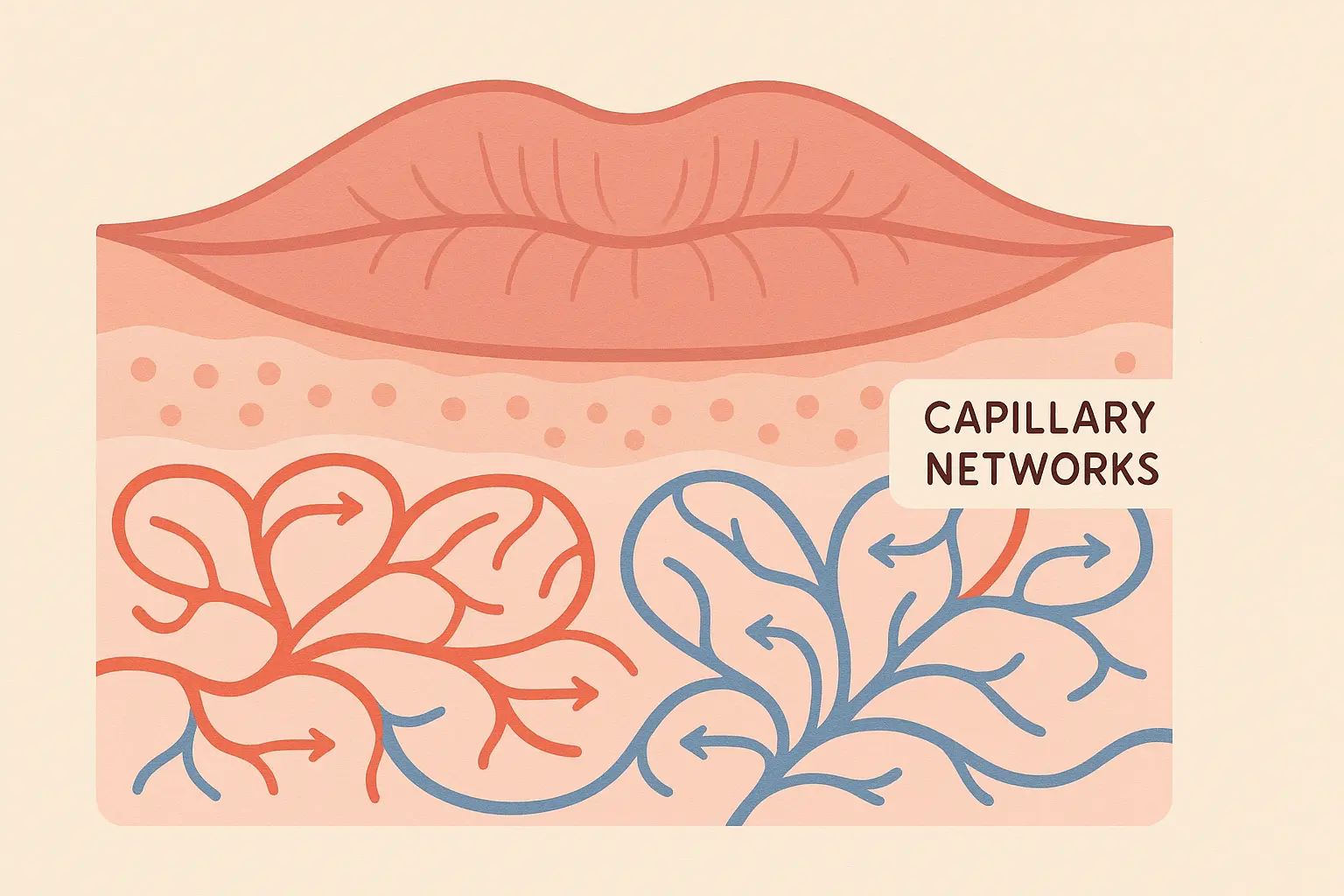
The whole process is actually pretty straightforward when you break it down. When your hemoglobin levels drop, your blood can’t carry as much oxygen. Your lips, with all those surface blood vessels, immediately show this change through color changes. That healthy pink comes from oxygenated blood showing through your thin lip tissue.
The cellular mechanisms behind lip discoloration connect directly to the importance of genetics in personalized healthcare, as genetic variations in iron metabolism can significantly affect how quickly discolored lips develop and respond to treatment.
Different types of anemia mess with this process in different ways. Iron deficiency reduces both the number of red blood cells and how much hemoglobin they can carry – that’s the classic pale look. B12 deficiency makes bigger, less efficient red blood cells that can’t do their oxygen-carrying job properly, which creates a different kind of lip discoloration.
How fast these changes happen depends on how quickly your hemoglobin drops. Lose blood suddenly? Your lips will change fast. Gradual iron deficiency? It creeps up over months. Understanding these patterns helps you figure out what your mirror is actually telling you.
When Pale Lips Don’t Mean Anemia
Here’s where things get tricky – pale lips aren’t always about anemia. I learned this lesson when I spent months taking iron supplements for lips that were actually pale because of a medication I was taking. Whoops.
There are actually several serious conditions that can make your lips look pale, and some of them need immediate medical attention, not iron pills. Missing these while you’re focused on anemia can be genuinely dangerous.
Recent awareness campaigns by Blood Cancer UK highlight that pallor can be seen by pulling down the lower eyelid to check for various blood disorders beyond simple anemia, emphasizing why you need to look at the whole picture when lip discoloration shows up with other concerning symptoms.
The Anemia Copycats You Need to Know
Several conditions can make your lips look just like anemia, including different types of shock, thyroid problems, and certain medications. These need completely different treatments – some need emergency care, not supplements.
I’ve watched people spend months taking iron for pale lips that were actually caused by their blood pressure medication or thyroid issues. Don’t be that person.
When Pale Lips Mean Emergency
If your lips suddenly turn pale and you also have a racing heart, low blood pressure, or you’re feeling confused, this could be shock. That’s not an iron deficiency – that’s a medical emergency. The lip pallor from shock usually comes on fast and brings other scary symptoms with it.
Different types of shock – whether from severe dehydration, heart problems, or blood loss – all cause lip pallor through different mechanisms. But they all need immediate medical intervention, not iron supplements.
How Your Medications Might Be Messing With Your Lip Color
Blood pressure medications, certain antidepressants, and other drugs can cause lip pallor by affecting your circulation. This usually happens within a few weeks of starting a new medication.
If you started a new med and then noticed your lips changing color, that timing is probably your answer, not developing anemia.
| Medication Type | How It Affects Lips | When It Happens | What to Do |
|---|---|---|---|
| Beta-blockers | Makes lips pale and cool | 2-4 weeks after starting | Talk to your doctor about adjusting dose |
| Calcium channel blockers | Pale with blue tinge | 1-3 weeks | Might need a different medication |
| Some antidepressants | Duller lip color | 4-6 weeks | Monitor and possibly adjust dose |
| Antihistamines | Pale, dry lips | Days to weeks | Focus on hydration and lip care |
The Thyroid Connection Nobody Talks About
Low thyroid function reduces your heart’s pumping power and circulation, making your lips pale in a way that looks exactly like anemia. But thyroid medication fixes this, not iron supplements.
This is why you need to look at the whole picture when your lips stay pale. The key difference is that thyroid-related pallor usually comes with other symptoms like feeling cold all the time, weight gain, and fatigue that doesn’t get better with rest.
How Different Types of Anemia Look Different
Once you know what to look for, different types of anemia actually create different patterns of lip discoloration. Iron deficiency looks different from B12 deficiency, which looks different from chronic disease anemia.
Learning
Learning to spot these differences helps you give your doctor better information about what you’re seeing and can guide them toward the right tests.
The Iron-Deficiency Look
Iron deficiency creates this really distinctive “paper-white” appearance with a sharp line between your lips and the skin around them. You might also get cracks at the corners of your mouth and your tongue might look smooth and weird.
The whiteness is usually very uniform and stark – quite different from other types. IVBoost UK reports that “around 57,000 emergency hospital admissions in the UK each year are directly attributed to iron deficiency anaemia,” showing how the progression from pale lips to serious symptoms can escalate quickly without proper treatment.
What B12 Deficiency Does
B12 deficiency creates this waxy, yellowish pallor that’s totally different from iron deficiency, and understanding this connection becomes crucial when considering starting on B12 injections for proper treatment of this type of anemia versus simple iron supplementation.
You might also get a smooth, red tongue and tingling in your hands and feet. That yellow undertone is the dead giveaway that separates it from other types of anemia.
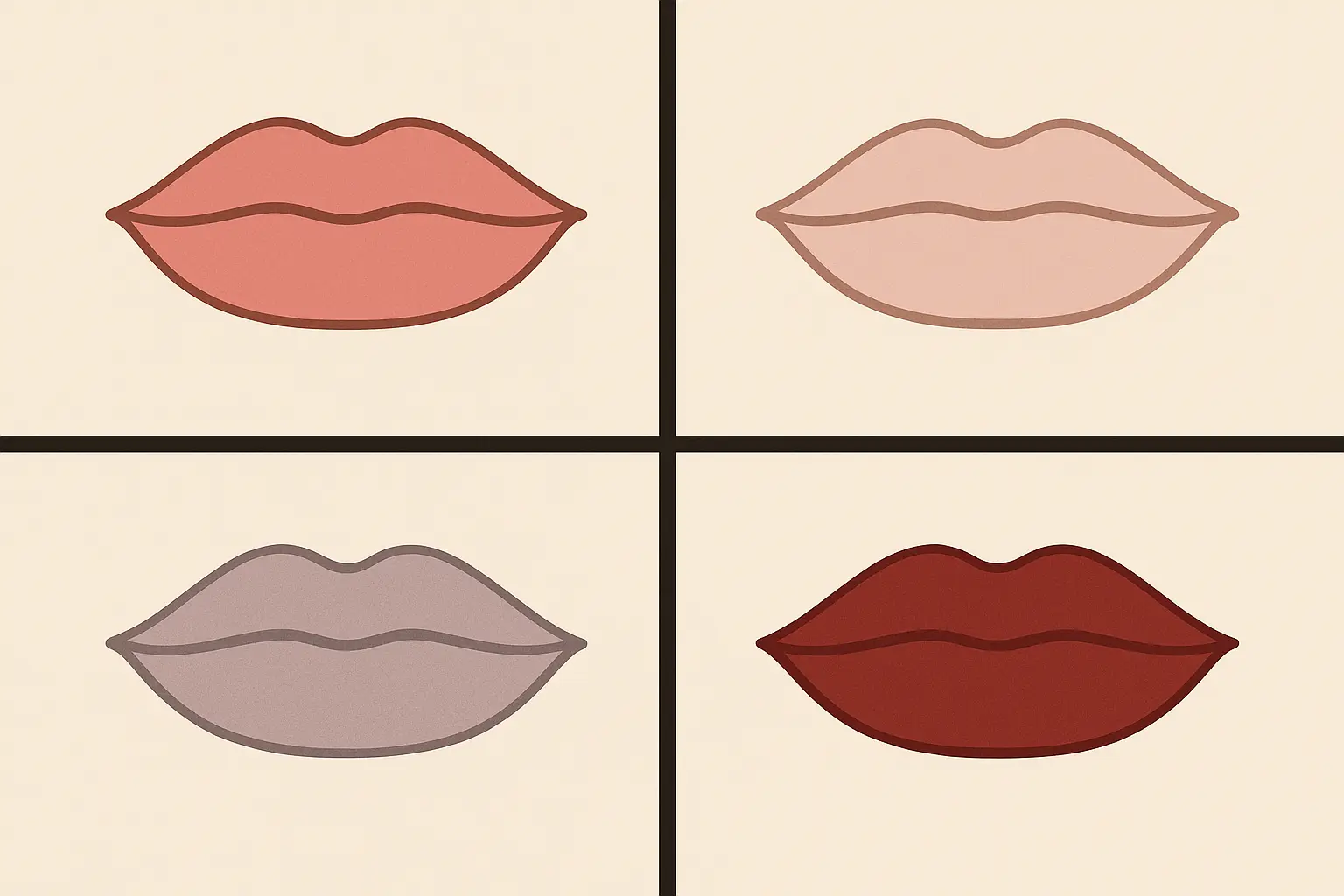
Chronic Disease Anemia
This one produces more of a grayish lip pallor compared to the bright pallor you get with nutritional deficiencies. It reflects your body’s inability to use iron properly because of inflammation, not because you don’t have enough iron.
My friend Maria has rheumatoid arthritis and noticed her lips had this grayish cast rather than the bright pallor her sister had with iron deficiency. Despite having normal iron stores, her chronic inflammation was blocking her body from using the iron properly, so she needed treatment of her autoimmune condition rather than iron supplements.
How I Started Monitoring My Own Health Through My Phone
This completely changed my relationship with my health. Instead of waiting for my yearly blood work or feeling terrible before getting help, I became an active participant in tracking my health status. And honestly? My smartphone made it possible.
The key is being systematic about it. This isn’t about casual selfies – it’s about creating consistent, trackable data that you can actually use and share with your doctor.
Creating Your Personal Monitoring System
I take photos of my lips under the same conditions every day – same lighting, same time, same camera position. This turns subjective “I think my lips look pale” into objective data I can track over time and share with my doctor.
The systematic approach is what makes this work. Without consistency, you’re just taking random photos that don’t tell you anything useful.
Getting the Lighting Right Every Time
This was the game-changer for me. I position myself facing a north-facing window during daylight hours, hold a white piece of paper next to my face for color reference, and take photos at the same time daily. Artificial lighting creates color distortions that can make healthy lips look pale or pale lips look healthy.
My Daily Photo Routine:
- Face a north window during daylight
- Hold white paper next to my face for reference
- Take photos at the same time daily
- Save with date stamps for tracking
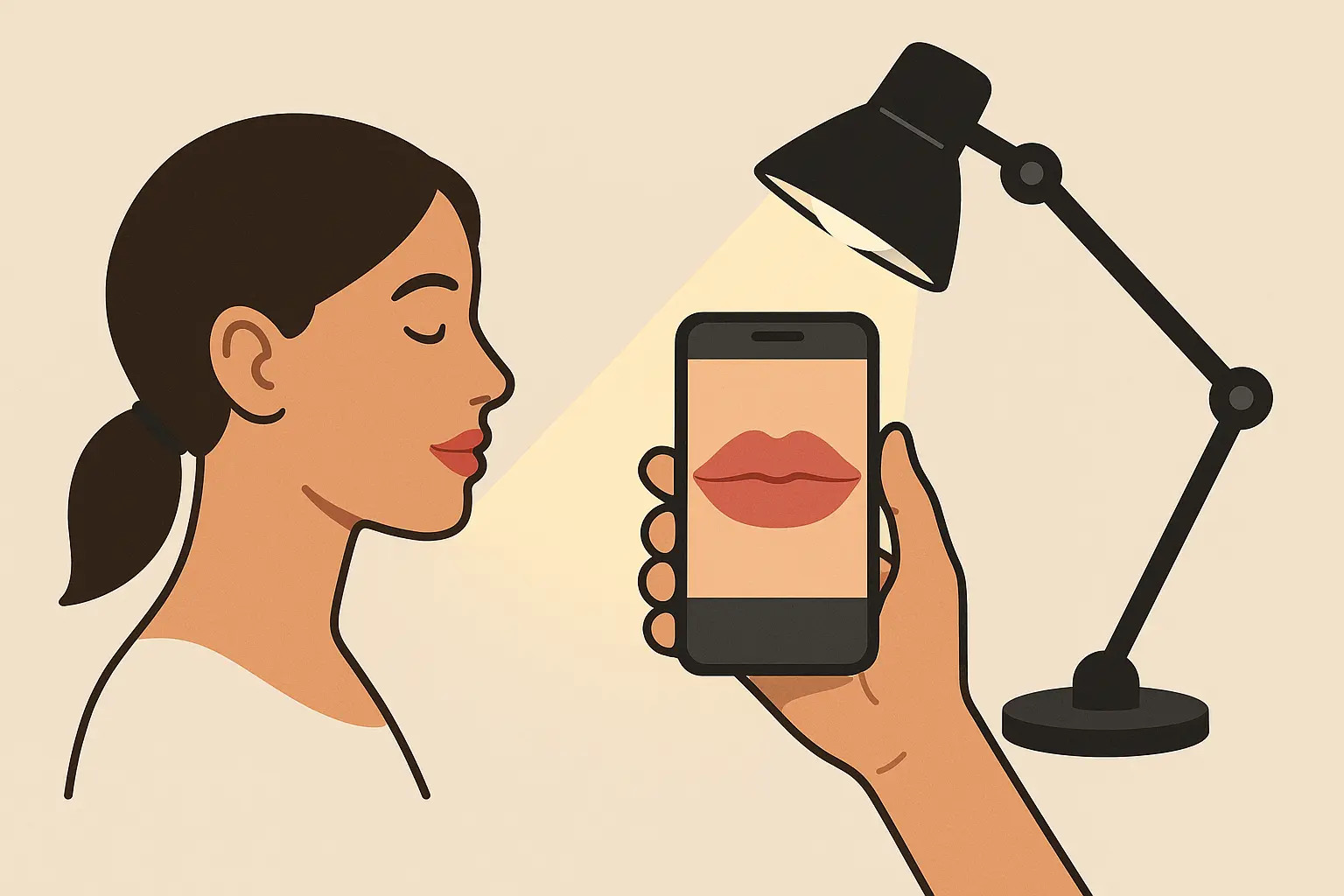
Using Technology for Objective Measurements
I downloaded a color assessment app that helps eliminate guesswork. These apps calibrate your phone’s camera and compare your lip color to standardized reference charts. It gives you actual data to track instead of relying on “I think they look paler.”
My Tech Setup:
- Downloaded a medically-validated color app
- Calibrated my phone using the app’s white balance tool
- Compare lip color to reference charts
- Log results in my health tracking app
Building Your Complete Health Picture
The real insight comes from tracking lip color changes alongside how I’m feeling, my energy levels, and exercise tolerance. This creates a personal health signature that often predicts my lab values before I even get tested.
You’re not just tracking one thing – you’re looking for patterns that connect physical symptoms with visual changes.
Connecting Symptoms and Lip Color
I keep a daily log rating my energy on a 1-10 scale alongside my lip photos. Over time, I started seeing patterns – when my lips looked more pale in my 4 PM photos, my energy was consistently lower the next day.
My friend James, who’s a marathon runner, tracked his lip color alongside his running performance for six weeks. When his lips appeared more pale, his running times were consistently 30-45 seconds slower per mile the following day. This pattern helped him identify iron deficiency three weeks before his routine physical showed a hemoglobin of 9.8.
My Daily Tracking Process:
- Create a daily symptom and lip color log
- Rate energy levels on a 1-10 scale alongside lip photos
- Note any correlation patterns over 2-4 week periods
- Share documented patterns with healthcare providers
Tracking Recovery in Real-Time
When I started iron supplementation, monitoring my lip color gave me real-time feedback on whether the treatment was working – often weeks before lab tests confirmed improvement. This immediate feedback helped me understand my body’s response and adjust timing for better results.
My Recovery Tracking Process:
- Established baseline lip color before starting supplements
- Documented weekly changes with consistent photos
- Noted timeline of color improvement vs. symptom relief
- Adjusted supplement timing based on visual and physical response
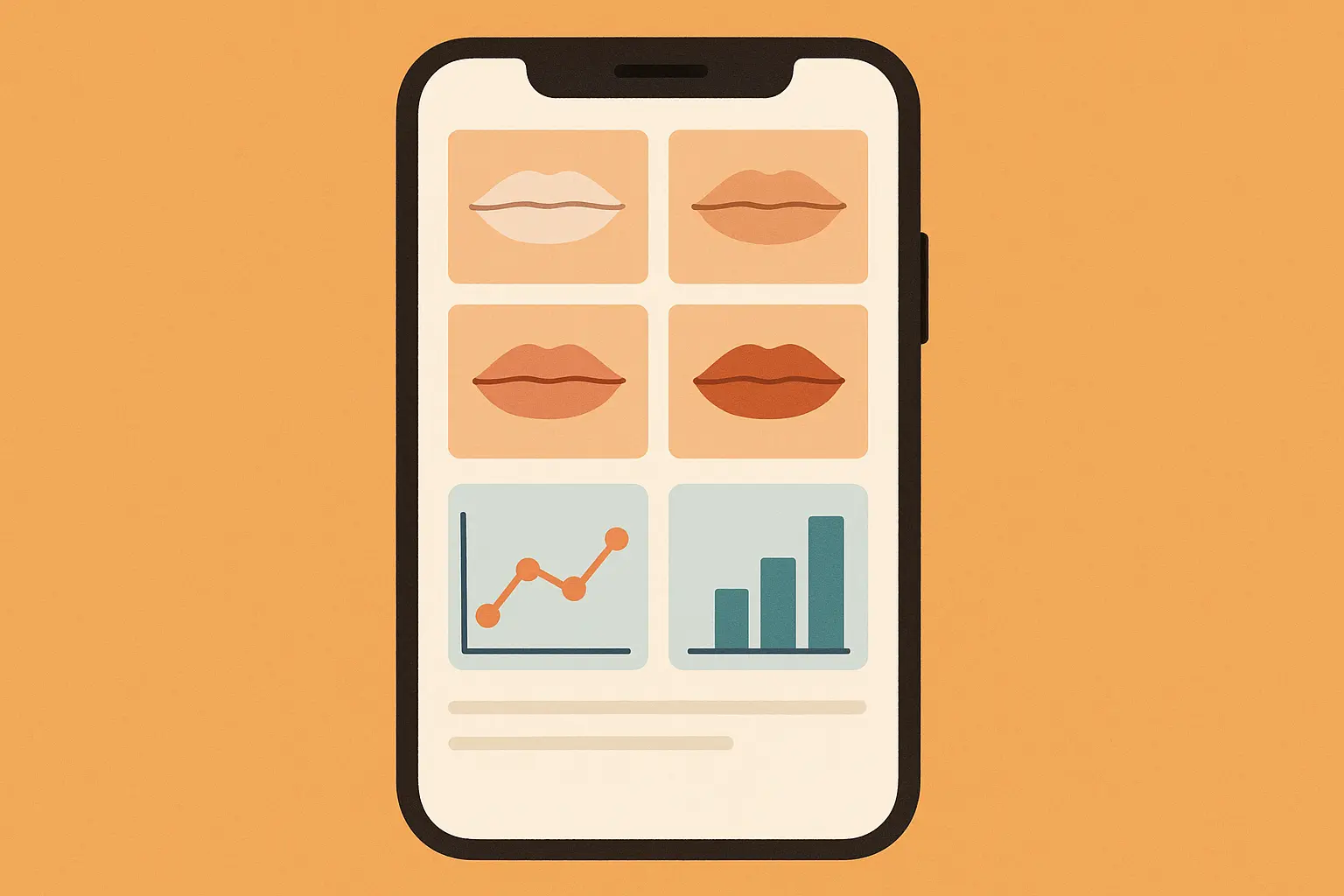
Getting Treatment That Actually Works for Your Body
Here’s what I learned the hard way – taking iron pills isn’t always enough. Your genetics, gut health, and other nutrients all play huge roles in whether treatment actually works. Cookie-cutter approaches often fail because we’re all different.
According to IVBoost UK, “women of childbearing age face a higher risk of iron deficiency anaemia, with prevalence reaching as high as 12% in premenopausal women in the UK,” which means personalized treatment approaches are crucial for this high-risk population.
I spent months frustrated with slow progress until I realized I needed to optimize my entire system, not just take iron supplements.
Why Your Genes Matter for Iron Absorption
Some people absorb iron really well, others barely absorb any at all. Understanding how genetic variations affect iron metabolism becomes essential when developing personalized treatment protocols, particularly when considering how hypomethylation stack B12 subtype treatments can complement iron therapy for individuals with specific genetic patterns that affect nutrient absorption.
Genetic variations in genes like HFE, TMPRSS6, and DMT1 affect how efficiently your body can use iron supplements. Understanding your genetic profile can help you adjust your approach instead of using generic recommendations that might not work for your body.
Personalizing Your Iron Strategy
If you’re a low absorber genetically, you might need higher doses, different timing, or specific co-factors. If you’re a high absorber, you might need less and need to be careful about overdoing it.
My Genetic Approach:
- Got genetic testing for iron metabolism
- Adjusted iron dosing based on absorption capacity
- Monitored response patterns specific to my profile
- Modified timing and co-factors accordingly
How Your Gut Health Affects Everything
This was huge for me. Gut inflammation, imbalanced bacteria, and certain medications can dramatically reduce iron absorption. Conditions like inflammatory bowel disease, celiac disease, or even common acid-blocking medications can mess with your ability to absorb iron.
I wasn’t seeing improvement until I addressed some gut issues that were preventing proper absorption.
My Gut Health Checklist:
- Evaluated for inflammatory bowel conditions or celiac disease
- Assessed medication interactions (especially acid blockers)
- Added probiotics to optimize absorption
- Timed iron away from absorption blockers
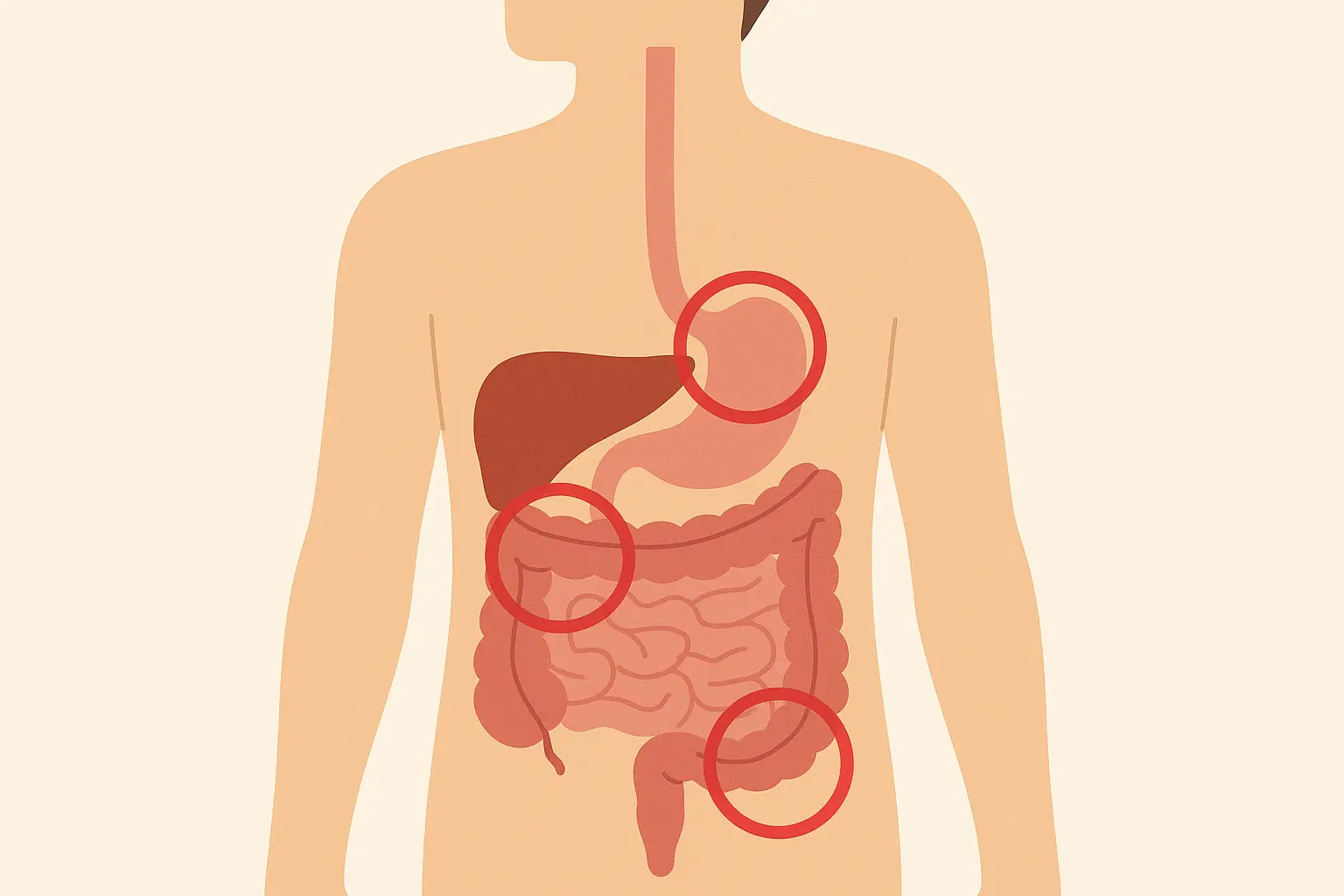
The Nutrient Team Approach
Iron doesn’t work alone – it needs vitamin C, B12, folate, and other nutrients to actually build healthy red blood cells. Taking iron by itself often fails because your body needs this whole team working together.
This synergistic approach often produces way faster, more sustainable results than iron supplementation alone.
Creating the Perfect Nutrient Environment
I take my iron with vitamin C to boost absorption, avoid calcium and zinc at the same time (they compete), and make sure my B12 and folate levels are good. This team approach produces way faster, more sustainable results than iron alone.
My Nutrient Strategy:
- Iron supplement with 100mg vitamin C
- B12 levels tested and optimized (above 400 pg/mL)
- Folate status confirmed adequate (above 7 ng/mL)
- Copper levels checked if iron supplementation is prolonged
- Calcium and zinc separated by 2+ hours
- Coffee timed away from iron intake
Nutrient Team Checklist:
- Iron supplement taken with 100mg vitamin C
- B12 levels tested and optimized (>400 pg/mL)
- Folate status confirmed adequate (>7 ng/mL)
- Copper levels checked if iron supplementation is prolonged
- Calcium and zinc separated from iron by 2+ hours
- Coffee/tea consumption timed away from iron intake
Knowing When to Drop Everything and See a Doctor
Some lip color changes are emergencies, others you can monitor and treat gradually. Learning the difference can literally save your life.
I’ve learned to recognize when something needs immediate medical attention versus when I can carefully monitor and adjust treatment. Beauty experts are increasingly recognizing serious health implications behind lip discoloration. As noted in “The Zoe Report’s recent coverage”, “hyperpigmentation is not to be confused with anemia — a blood disorder that affects blood cells and a cause of pale or loss of color in the lips,” emphasizing how important it is to distinguish cosmetic concerns from medical emergencies.
Red Flags That Mean Emergency Room
Completely white or blue-tinged lips, especially with chest pain, shortness of breath, or confusion, means your hemoglobin might be dangerously low. This isn’t a situation for home monitoring – it’s a medical emergency.
These aren’t situations for trying to tough it out or waiting to see if it gets better – they need professional intervention immediately.
When Your Lips Signal Immediate Danger
Lips that look completely white or blue, especially when you’re also having chest pain, severe shortness of breath, or feeling confused, probably means your hemoglobin has dropped to dangerous levels – potentially below 5 g/dL. This level requires immediate medical evaluation and possibly emergency blood transfusion.
Emergency Red Flags:
- Lips completely white or blue
- Chest pain or pressure
- Severe shortness of breath at rest
- Confusion or altered thinking
- Heart rate over 100 at rest
- Dizziness when standing
- Fainting episodes
My Emergency Assessment Process:
- Check for associated symptoms: chest pain, severe fatigue, confusion
- Monitor for signs of heart stress: rapid heart rate, shortness of breath
- Seek immediate medical attention if multiple red flags are present
- Document timeline of symptom progression for medical providers
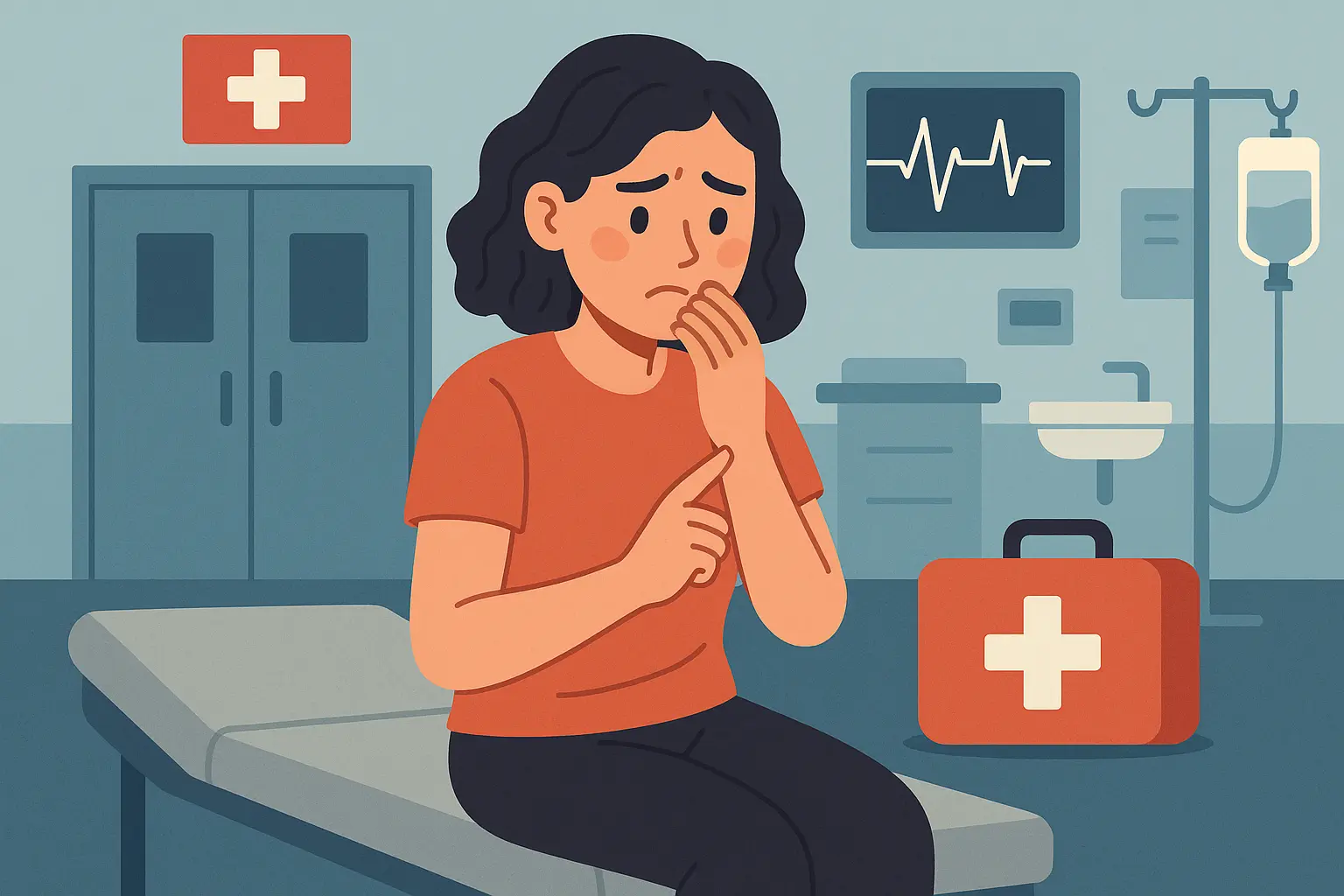
The Bleeding Emergency You Might Miss
If your lips go from normal to pale really quickly (days to weeks), you might be losing blood faster than your body can replace it. This could be from heavy periods, internal bleeding, or other sources that need urgent investigation.
This isn’t the gradual pallor that develops over months – this is your body losing blood and needs immediate medical attention.
My Bleeding Assessment:
- Look for obvious bleeding sources (heavy periods, dark stools, bleeding gums)
- Monitor for signs of blood loss (dizziness, rapid pulse, low blood pressure)
- Seek urgent medical evaluation for rapid-onset pallor
- Be prepared for potential hospitalization and blood work
How to Know If Your Treatment Is Working
Monitoring treatment effectiveness through lip discoloration changes becomes particularly important when using targeted therapies, and understanding how different approaches work can help determine whether B12 shots for weight loss might address both anemia and metabolic concerns simultaneously for comprehensive health improvement.
With proper iron supplementation, your lip color should start improving within 2-4 weeks, with significant improvement by 6-8 weeks. If you’re not seeing changes by this timeline, something’s wrong – either absorption issues, ongoing blood loss, or possibly a different diagnosis entirely.
The Recovery Timeline You Should Expect
Understanding these timelines helps you know when to be patient with treatment and when to push for additional evaluation or different approaches.
My Recovery Timeline:
- Document baseline before starting treatment
- Monitor weekly for initial changes (2-4 weeks)
- Expect significant improvement by 6-8 weeks
- Reassess if no improvement after 8 weeks
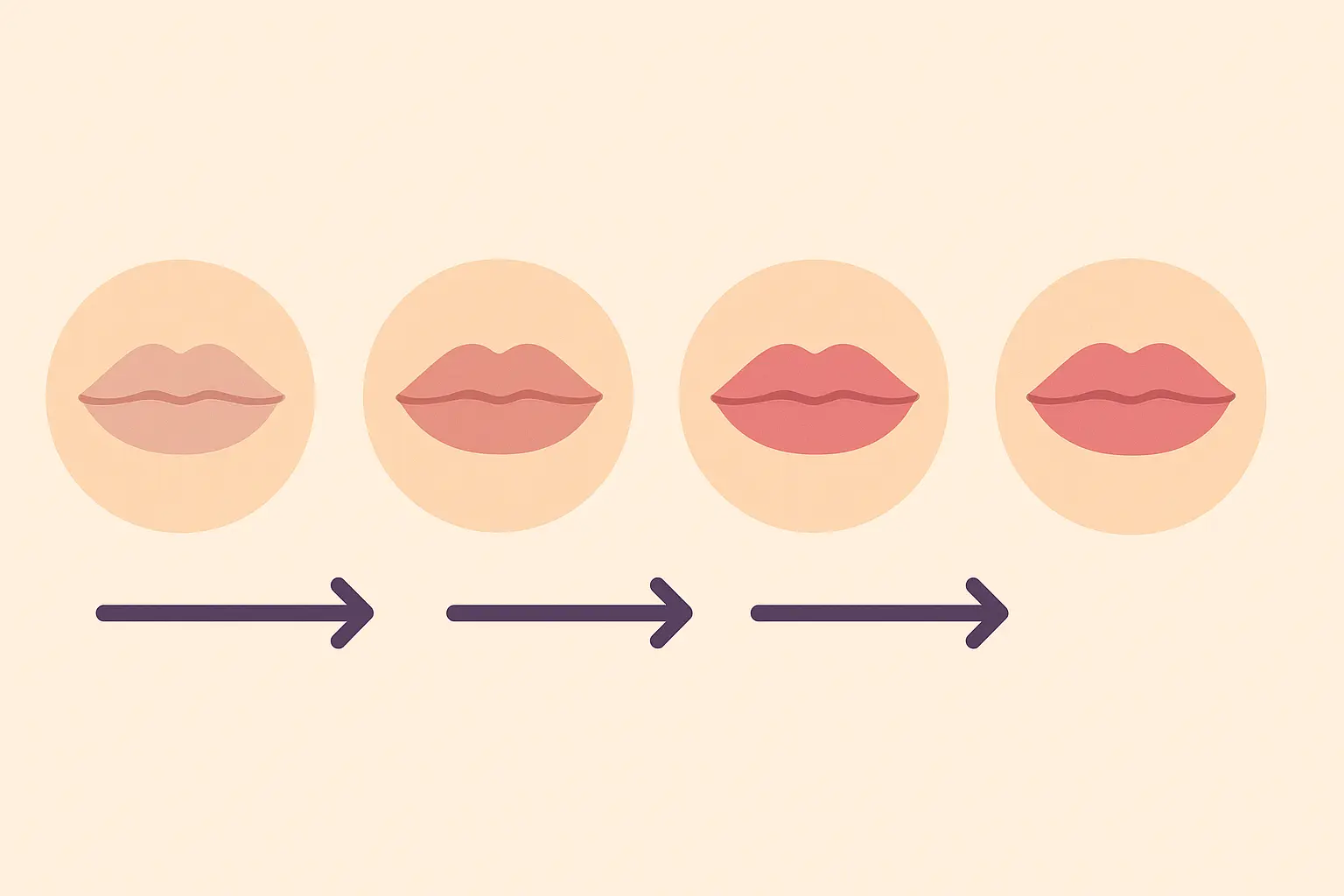
When Standard Treatment Isn’t Working
When conventional iron supplementation fails to improve persistent lip discoloration, exploring advanced diagnostic options becomes crucial, particularly considering how iron infusion side effects and risks compare to oral supplementation for individuals with severe absorption issues or refractory anemia.
If conventional iron supplements aren’t improving your lip color despite adequate treatment, you need more comprehensive testing. This might mean malabsorption, ongoing blood loss, chronic disease, or something else entirely.
This is when you need to advocate for yourself and push for more testing rather than continuing ineffective treatment.
Treatment Failure Investigation:
- Verify adequate iron dosing (100-200mg elemental iron daily)
- Check for absorption blockers (acid blockers, antacids, calcium)
- Evaluate compliance and timing
- Test for ongoing blood loss (stool tests, heavy periods)
- Consider inflammatory markers (CRP, ESR)
- Assess for celiac disease or IBD
My Treatment Failure Checklist:
- Verify iron supplement contains elemental iron (not iron salt weight)
- Confirm adequate dosing (100-200mg elemental iron daily)
- Check for absorption inhibitors (PPIs, antacids, calcium)
- Evaluate compliance and timing of supplementation
- Test for ongoing blood loss (stool occult blood, heavy menses)
- Consider inflammatory markers (CRP, ESR)
- Assess for celiac disease or IBD
The journey from understanding lip discoloration to actually fixing your health requires personalized care that addresses your unique needs. That’s where something like Enov.One’s approach makes sense – they get that effective anemia treatment goes way beyond just throwing iron pills at the problem.
Their doctors understand you need to address gut health, genetic factors, and comprehensive nutritional support. Through their telemedicine platform, you can get the kind of personalized care that actually transforms your lip color and your overall energy.
Ready to figure out what’s really going on with your fatigue and get your energy back? Take Enov.One’s 5-minute assessment to see if their personalized approach might work for you.
Final Thoughts
Your lips are basically giving you a free health screening every single day – no expensive tests, no doctor visits required. Learning to read these signals lets you catch problems early, track whether your treatment is working, and make smart decisions about when you actually need medical help.
But here’s the thing – this works best when you combine it with proper medical guidance and comprehensive health approaches tailored to your individual needs. The goal isn’t to replace your doctor, but to become a more informed, proactive participant in your own health journey.
Understanding lip discoloration patterns completely changed how I approach my health. Instead of waiting for problems to get bad enough to force me to seek help, I can now spot issues early and address them before they tank my quality of life.
The best part? Once you know what to look for, it becomes second nature. Every morning when you brush your teeth, you’re getting valuable information about your health status. And honestly, catching anemia early and treating it properly can be the difference between feeling exhausted all the time and having the energy to actually enjoy your life.
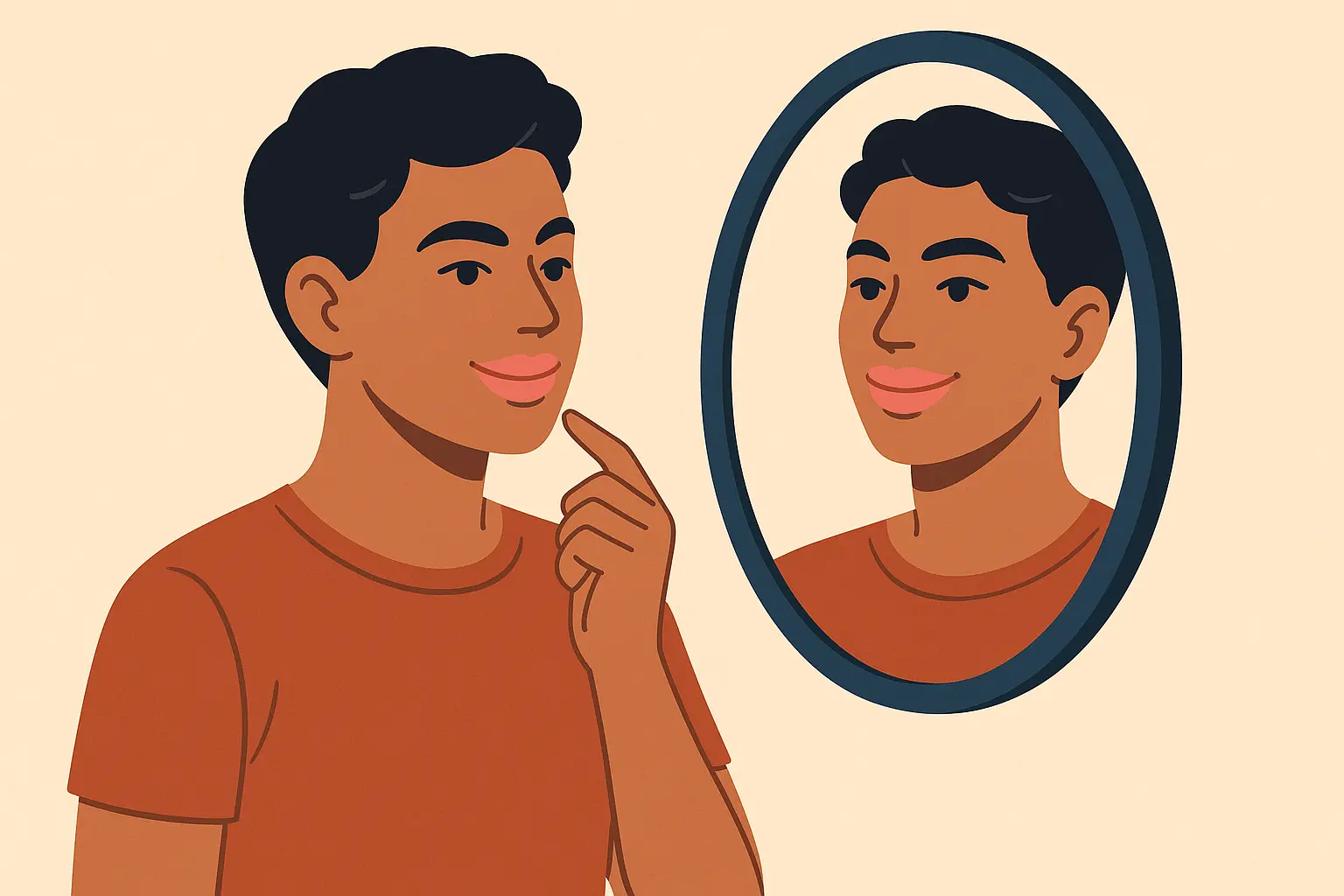
Your body is constantly communicating with you – your lips are just one of the clearest channels. Learning to listen can be genuinely life-changing.
